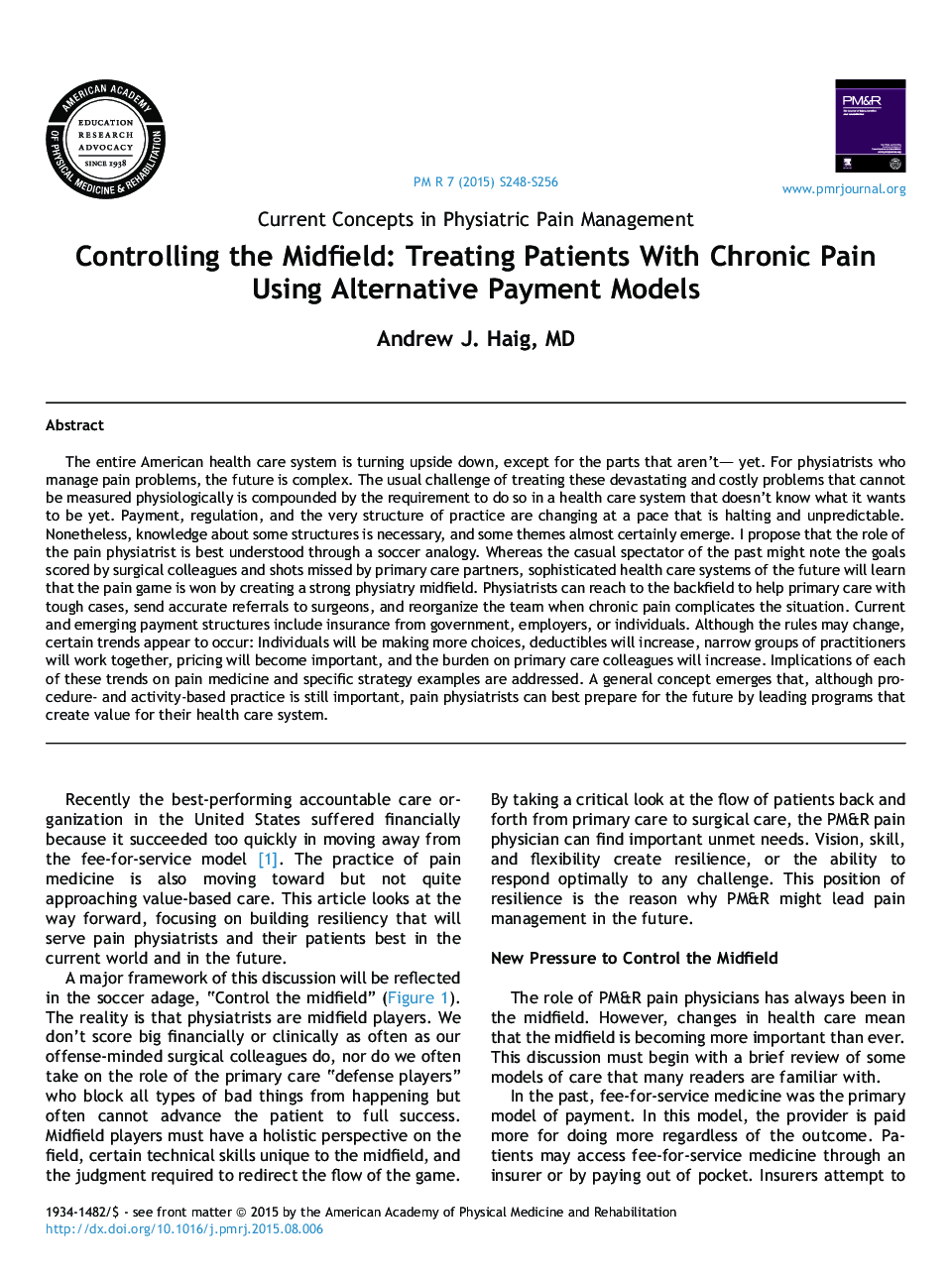| Article ID | Journal | Published Year | Pages | File Type |
|---|---|---|---|---|
| 2706719 | PM&R | 2015 | 9 Pages |
Abstract
The entire American health care system is turning upside down, except for the parts that aren't- yet. For physiatrists who manage pain problems, the future is complex. The usual challenge of treating these devastating and costly problems that cannot be measured physiologically is compounded by the requirement to do so in a health care system that doesn't know what it wants to be yet. Payment, regulation, and the very structure of practice are changing at a pace that is halting and unpredictable. Nonetheless, knowledge about some structures is necessary, and some themes almost certainly emerge. I propose that the role of the pain physiatrist is best understood through a soccer analogy. Whereas the casual spectator of the past might note the goals scored by surgical colleagues and shots missed by primary care partners, sophisticated health care systems of the future will learn that the pain game is won by creating a strong physiatry midfield. Physiatrists can reach to the backfield to help primary care with tough cases, send accurate referrals to surgeons, and reorganize the team when chronic pain complicates the situation. Current and emerging payment structures include insurance from government, employers, or individuals. Although the rules may change, certain trends appear to occur: Individuals will be making more choices, deductibles will increase, narrow groups of practitioners will work together, pricing will become important, and the burden on primary care colleagues will increase. Implications of each of these trends on pain medicine and specific strategy examples are addressed. A general concept emerges that, although procedure- and activity-based practice is still important, pain physiatrists can best prepare for the future by leading programs that create value for their health care system.
Related Topics
Health Sciences
Medicine and Dentistry
Orthopedics, Sports Medicine and Rehabilitation
Authors
Andrew J. MD,
